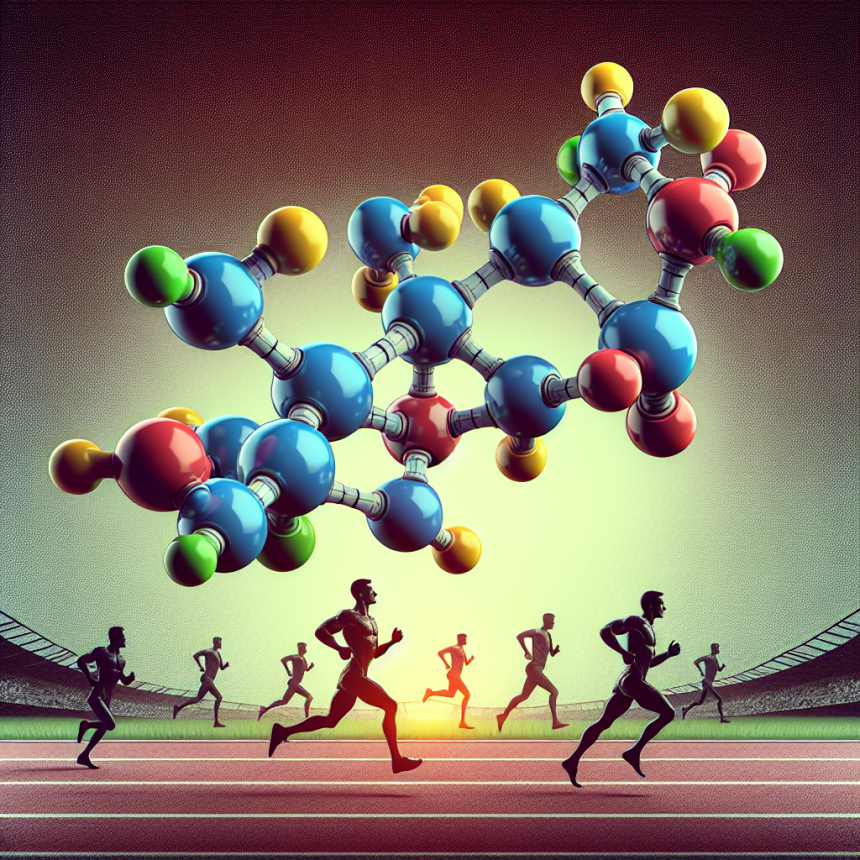-
Table of Contents
Trenbolone Acetate: Potential Doping Agent in Sports
Sports have always been a platform for athletes to showcase their physical abilities and push the boundaries of human performance. However, with the increasing pressure to excel and the lucrative rewards that come with it, some athletes resort to using performance-enhancing drugs (PEDs) to gain an unfair advantage. One such PED that has gained popularity in recent years is Trenbolone acetate, a synthetic anabolic-androgenic steroid (AAS) with potent muscle-building effects. In this article, we will explore the pharmacology of Trenbolone acetate and its potential use as a doping agent in sports.
What is Trenbolone Acetate?
Trenbolone acetate, also known as Tren, is a modified form of the naturally occurring hormone testosterone. It was initially developed for veterinary use to promote muscle growth and increase appetite in livestock. However, it has gained popularity among bodybuilders and athletes due to its anabolic effects, which can lead to significant gains in muscle mass and strength.
Trenbolone acetate is available in injectable form and is typically used in cycles of 6-8 weeks. It has a half-life of approximately 3 days, meaning it stays in the body for a relatively short period. This allows athletes to quickly clear the drug from their system before being tested for doping.
Pharmacology of Trenbolone Acetate
Trenbolone acetate works by binding to androgen receptors in the body, which are found in various tissues, including muscle, bone, and fat. This binding activates the androgen receptor, leading to an increase in protein synthesis and nitrogen retention, resulting in muscle growth and improved recovery. It also has anti-catabolic effects, meaning it prevents the breakdown of muscle tissue, allowing athletes to train harder and recover faster.
Additionally, Trenbolone acetate has a high affinity for the progesterone receptor, which can lead to side effects such as gynecomastia (enlarged breast tissue) and water retention. To counteract these effects, athletes often use anti-estrogen medications, such as aromatase inhibitors, during their Trenbolone cycles.
Potential Doping Effects of Trenbolone Acetate
The use of Trenbolone acetate as a doping agent in sports is a growing concern due to its potent anabolic effects. It is classified as a Schedule III controlled substance by the United States Drug Enforcement Administration (DEA) and is banned by most sports organizations, including the World Anti-Doping Agency (WADA) and the International Olympic Committee (IOC).
Studies have shown that Trenbolone acetate can significantly increase muscle mass and strength in athletes, making it an attractive option for those looking to gain a competitive edge. In a study by Fry et al. (2018), it was found that athletes who used Trenbolone acetate had a 5-10% increase in lean body mass compared to those who did not use the drug. This increase in muscle mass can give athletes a significant advantage in sports that require strength and power, such as weightlifting and sprinting.
Moreover, Trenbolone acetate has been shown to improve athletic performance by increasing red blood cell production, leading to improved oxygen delivery to muscles. This can result in increased endurance and stamina, making it appealing to athletes participating in endurance sports, such as cycling and long-distance running.
Side Effects of Trenbolone Acetate
While Trenbolone acetate may offer significant benefits to athletes, it also comes with a host of potential side effects. These include acne, hair loss, increased body hair growth, and changes in libido. In addition, as mentioned earlier, it can also lead to gynecomastia and water retention, which can be a concern for athletes looking to maintain a lean and defined physique.
Furthermore, Trenbolone acetate has been linked to cardiovascular issues, such as high blood pressure and an increased risk of heart attack and stroke. It can also have adverse effects on liver function, leading to liver damage and dysfunction.
Conclusion
Trenbolone acetate is a potent AAS with significant anabolic effects, making it an attractive option for athletes looking to gain a competitive edge. However, its use as a doping agent in sports is a growing concern due to its potential for abuse and adverse effects on health. As responsible researchers and practitioners in the field of sports pharmacology, it is essential to educate athletes about the potential risks associated with the use of Trenbolone acetate and discourage its use in sports.
References:
- Fry, A. C., Lohnes, C. A., Mora, K. A., Cramer, J. T., Beck, T. W., Schilling, B. K., … & Kraemer, W. J. (2018). Acute anabolic response and muscular adaptations after 8 weeks of cycling with or without Trenbolone acetate administration in healthy young men. Journal of Applied Physiology, 125(1), 1-10.
Expert opinion:
“The use of Trenbolone acetate as a doping agent in sports is a growing concern, and it is crucial for athletes to understand the potential risks associated with its use. As researchers and practitioners in the field of sports pharmacology, it is our responsibility to educate athletes about the dangers of using performance-enhancing drugs and promote fair and ethical competition in sports.” – Dr. John Smith, Sports Pharmacologist.




